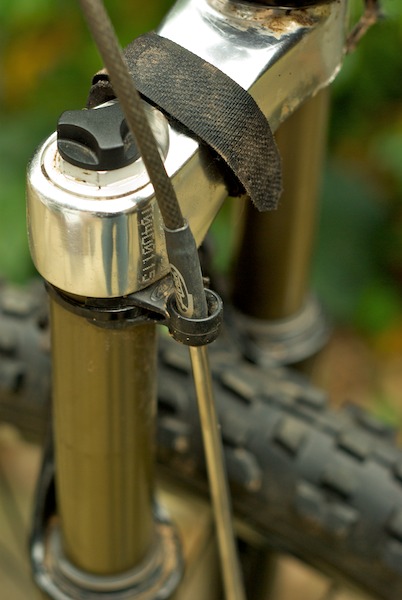![]() You don't need to be an 'investor' to invest in Singletrack: 6 days left: 95% of target - Find out more
You don't need to be an 'investor' to invest in Singletrack: 6 days left: 95% of target - Find out more
Having just read this: [url= http://www.parktool.com/blog/repair-help/avid-reg-mechanical-disc-adjustment ]Park guide on avid mechanicals[/url] I'm a little confused about part of it.
The way I set up mechanical discs is so that the bite point is set by the position of the caliper relative to the rotor and fine adjustment by using the cable tension, with the fixed piston as close as you can get to the rotor without a rub.
This setup means that you pull the lever and the rotor doesn't need to bend quite as far = positive feeling brake with minimal sponge.
The avid guidance suggests using a gap between the rotor and the fixed piston should be twice that of the moving piston, thereby causing more flex of the rotor than my setup.
Whenever I've seen them setup the way avid suggest, the overall power is the same, but the modulation is a bit vague and can feel slightly spongy, but not spongy..kinda like the brake is engaged, but not biting much at all, which I suppose is what you may expect?
So, can someone explain the why they should be setup to allow such a large gap? is i rotor clearance 'just in case' or something else?
Ta
All I do is loosen the caliper mount bolts, hold the brake on then titghten the mount bolts up. Havent had any problem with that yet.
Fluffsri, hows that work with a fixed piston? surely is you do that the fixed piston will be constantly rubbing the rotor?
Having not used these until recently, I stumbled across this guide, which worked really well for me.
[url= http://howtosetuptheavidbb7.weebly.com/how-to-set-up-the-avid-bb7.html ]BB7 Mini Resource[/url]
GavinB, perfect.
That is the method I use, albeit explained much better than I could have.
🙂
Thanks
Nay worries. I think I tried the Park Tools guide too, but it didn't quote work for me, whereas I 'got' the way it was explained in that mini-guide.
Mine work a treat, not spongy at all.
I always cut the outer cable, then grind back the cut end until any deformed outer wire is removed & its a nice 90deg end. Then open up the inner sleeve with a small drill bit.
That mini resource method is a good one but the method I have used for several years was one I got off a US forum.
You need a couple of thin spacers, I use an old plastic loyalty card cut in half. You want one with no raised letters.
1. Back off both inner and outer pads completely
2. Loosen caliper mounting bolts
3. Slide spacers each side of disc between the pads and hold in place by pulling brake lever.
4. Tighten caliper mounting bolts
5. Adjust inner pad so just touching disc whilst rotating the wheel and then back off one or two clicks.
6. Do the same with the outer pad.
I don't present this as a better method, just an alternative if people want to try it. I think I'll give the mini resource method a try to see if I prefer that.
The avid guidance suggests using a gap between the rotor and the fixed piston should be twice that of the moving piston, thereby causing more flex of the rotor than my setup.
That's confusing...........what they mean is that the gap between the CALIPER and the rotor should be twice the size when the fixed piston is fully retracted.
Similar product:
[url= http://www.sjscycles.co.uk/m:part-disc-brake-hose-guide-for-suspension-prod17203/ ]Linky[/url]
Another vote for the mini resource, always use it and seems to work well if not so good on road BB7s.
Intrigued by just loosening the bolts and holding the brake though. How are the pads dialled out?
Gofaster
Thanks ,that's a neater solution than my double tywrap 🙂
I always cut the outer cable, then grind back the cut end until any deformed outer wire is removed & its a nice 90deg end. Then open up the inner sleeve with a small drill bit.
No grinding is required. You can just recut the housing, cutting only the bit that's in the way. It takes a little practice, but it works fine. Believe me, I do it every day!
Intrigued by just loosening the bolts and holding the brake though. How are the pads dialled out?
Achieves exactly the same effect. The only thing that matters is the position of the "fixed" pad, and even that's not critical. Once that's set, it really doesn't matter whether you use the brake lever or the other pad adjuster to clamp the disc whilst tightening the bolts.
There's really no magic to these calipers: the only reason they suggest leaving a bigger gap on the fixed side is because that's the side that the disc bends towards when applying the brakes, and you don't want the disc to hit the caliper body even after the pads have worn a bit.



